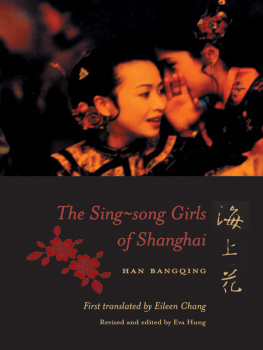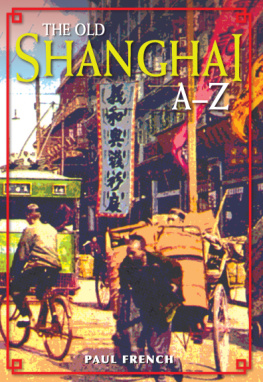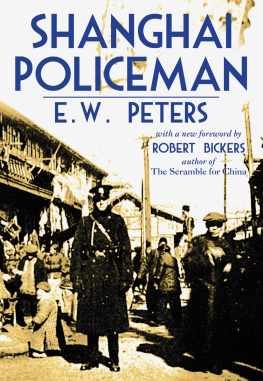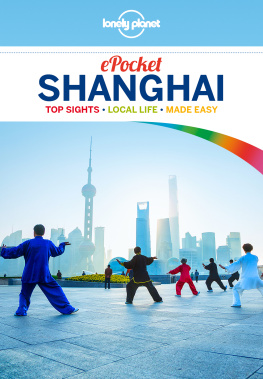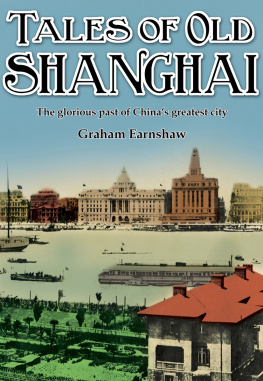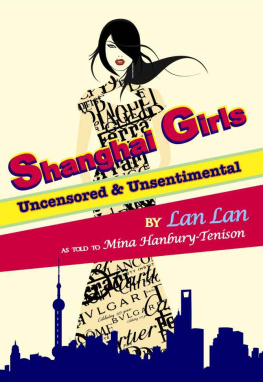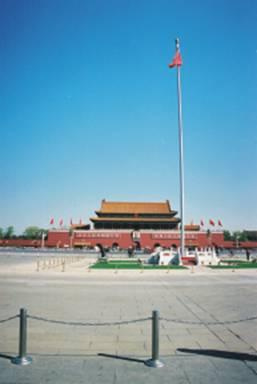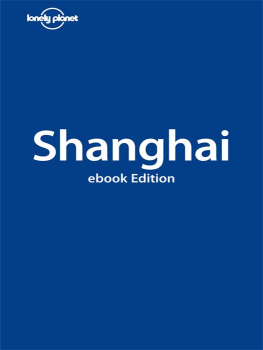The Sing-song Girls of Shanghai
Weatherhead Books on Asia

| THE Sing-song HAN BANGQING Girls of Shanghai First translated by Eileen Chang Revised and edited by Eva Hung COLUMBIA UNIVERSITY PRESS :: NEW YORK |
COLUMBIA UNIVERSITY PRESS
Publishers Since 1893
New York Chichester, West Sussex
cup.columbia.edu
Copyright 2005 University of Southern California
All rights reserved
E-ISBN 978-0-231-52945-7
The illustrations appearing on the title page and page 1 are reprinted from Renditions, nos. 17 and 18, with permission from the Research Centre for Translation, Chinese University of Hong Kong.
This publication has been supported by the Richard W. Weatherhead Publication Fund of the East Asian Institute, Columbia University.
: :
The University of Southern California would like to thank Mr. Stephen C. Soong and Mrs. Mae Soong for their generous donation of the manuscript of Eileen Changs draft translation of this novel. Columbia University Press and the University of Southern California Library would like to thank Lillian Pu Yang, whose initial efforts to reconstruct the manuscript and bring this work to the attention of scholars led to the publishing contract between USC and Columbia University Presss.
Library of Congress Cataloging-in-Publication Data
Han, Bangqing, 18561894.
[Hai shang hua lie zhuan. English]
The sing-song girls of Shanghai / Han Bangqing ;
first translated by Eileen chang ; revised and edited by Eva Hung.
p. cm.(Weatherhead books on Asia) Includes bibliographical references.
ISBN 0231122683 (cloth : alk. paper)
1. Han, Bangqing, 18561894Translations into English. I. Title. II. Series.
PL2710.A58H313 2005
895.1348dc22
2005043234
A Columbia University Press E-book.
CUP would be pleased to hear about your reading experience with this e-book at .
CONTENTS ::
::
Sing-song Girls of Shanghai (Haishanghua liezhuan, 1894, hereafter referred to as Sing-song Girls) is the greatest late Qing courtesan novel, and next to Flowers in the Mirror (Jinghuayuan, 1830), it may well be the greatest work of nineteenth-century Chinese fiction. The novel provides a panoramic portrait of life in the Shanghai pleasure quarters during the last decades of the nineteenth century. In sixty-four chapters, it describes more than two dozen courtesans and their patrons, seen in the twin sports of desiring and being desired, and it inquires into the moral and psychological consequences of their romantic adventures.
The author of Sing-song girls is Han Bangqing (18561894). A native of Lou County in Songjiang Prefecture, Han spent his youth in Beijing with his father, a low-ranking governmental official. Despite his reputation as a child prodigy, Han repeatedly failed the civil service examinations. He eventually gave up hope of an official career and settled in Shanghai, becoming a regular contributor to the newspaper Shenbao with a column about the demimonde. Sing-song Girls was allegedly based on Han Bangqings personal experience. He is said to have been a regular patron of Shanghai brothels and made the boudoirs of some of his favorite courtesans into scenes of intimate investigation.
Han Bangqings decadent lifestyle may sound much like that led by many other drifting scholars from the late Qing period. In Hans case, however, two things merit attention. In 1892 Han Bangqing founded a magazine entitled Haishang qishu (A book of Shanghai wonders), a biweekly that featured his collection of Gothic short stories, Taixian mangao (Sketches of Taixian), and his novel, Sing-song Girls, in serialization. Although it lasted for only eight months, Haishang qishu appears to be the first literary magazine in Chinese history.
Second, Sing-song Girls is a novel that highlights Shanghai as the geographical locale that gives meaning to the story narrated. As the first modern city in China, Shanghai was not merely a rising metropolis that served as the new center of foreign and domestic trades. It conveyed an urban aura different from that of traditional cities, thanks to the creation of new social groups, economic relationships, and habits of consumption. Shanghai thrived on account of the competition and interaction between and among foreign and indigenous forces, practices, and institutions; and the upper-class courtesan houses, located mostly in the foreign concessions, stood out as some of the most visible sitesalmost a public spherein which such competition and interaction were carried out. It is against this transactional and transient background that the sing-song girls gathered and parted like flowers drifting on the surface of an unfathomable sea, as the reverse of the name of Shanghai, haishang, suggests.
Ironically enough, Sing-song Girls has never been popular among general readers. People usually attribute this unpopularity to the fact that it is written in the Wu dialect and therefore is unreadable to readers from other regions of China. Actually, the novel should not be all that unintelligible to Chinese readers, as the Wu dialect is used mostly by courtesan characters to reflect the refined linguistic taste of their profession. Moreover, the language problem was overcome thanks to the acclaimed novelist Eileen Chang, who translated the dialectal part of the book into Mandarin Chinese in 1983. Chang is also to be credited for having produced the original English version of the novel.
The real reason for the novels unpopularity might lie in the fact that it does not read like the courtesan novel we generally know. Compared with conventional courtesan novels of the late Qing period, Sing-song Girls falls short of the sentimental narcissism that characterizes A Precious Mirror of Flowers (Pinhua baojian, 1849) and Traces of Flowers and Moon (Huayuehen, 1872), and it never emulates Nine-Tailed Turtle (Jiuweigui, 1911) in sensationalizing the sordid dealings of the prostitutes and their clients. Han Bangqing narrates everything in a matter-of-fact style, to the point where even the most glamorous banquets and the most sensuous rendezvous sound like familiar and familial routines. As it is, his novel seduces us by rendering a special linguistic sensation one would not have expected after having read traditional courtesan novels. It initiates a way of describing desire and passion in the courtesan house from a perspective that would only later be likened to the fiction of psychological realism.
The courtesans and their customers in Sing-song Girls appear as a group of amazingly ordinary women and men. They meet, fall in love, quarrel, break up, and are reunited just like ordinary couples, but, on the other hand, they know they are only playing roles commensurable with those of husband and wife. While they could not care less about composing love letters and poems to each other, as clichd formulae would have it, they are equally not at all obsessed with what goes on in bed. Eileen Chang is right in pointing out that there is no sensuous quality [in the novel], though the novels topic is the pleasure quarters of Shanghai eighty years ago.
The realism of the novel brings into question not only the lifestyle of courtesans as received or imagined by society but also the cultural, aesthetic motivations of reading and writing the courtesan romance as such. One should also see the novels lifelike atmosphere as an effect of the real, an effect that arises as the novel pits itself against the narrative conventions of the courtesan novel. At his best, Han Bangqing plays in his novel with a fascinating contradiction of goals: he writes to upset the unlikely romantic myth of courtesan life, yet his realistic endeavor works also to ensure the continued existence of that myth, which, however questionable, has become part of the cultural capital circulated among the characters and contemporary readers alike.
Next page
